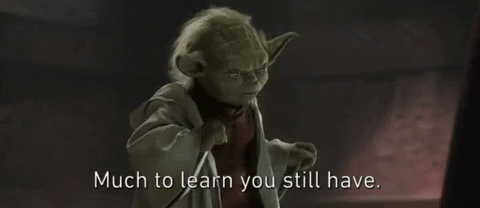The Art Of Critical Reading: How To Transform From Reactive Reader To Regularly Rejecting the Premise (Part II)
Ask yourself 4 important questions to become a critical, proactive reader.
Arrrrr! 🏴☠️ Welcome to a 🔒 subscriber-only edition 🔒 of Category Pirates. Each week, we share radically different ideas to help you design new and different categories. For more: Dive into an audiobook | Listen to a category design jam session | Enroll in the free Strategy Sprint email course
Dear Friend, Subscriber, and Category Pirate,
We recently published Part I of The Art Of Critical Reading mini-book series. You learned the 5-step process to improve your critical reading skills and rewire your brain toward category design thinking. This is important because…
Critical reading is the key to rejecting the premise.
Rejecting the premise is the key to legendary Category Design.
(And Category Designers create new markets and different futures, and are generally better looking than most. 😎)
How do you improve at rejecting the premise? You must revisit and revise your facts, filters, feelings, and forecasts. For example, let’s look at Charles Barkley, Larry David, and Elon Musk—all known for having “no filters." In reality, they have different filters.
They highlight different facts.
They have different filters for seeing the world.
They have no problem living in controversy and discomfort.
They create the most value and make the most money in their respective fields.
Let’s start with Charles Barkley, a pro basketball player turned sports analyst. The hardest part is picking only one of his most controversial quotes. So here are a few:
Asked about the women of San Antonio, “There’s some big old women down there.”
Asked if he’d play for the 76ers again, “If they paid me enough, I’d work for the Klan.”
Asked by the judge if he had any regrets after throwing a man through a 1st-floor window, “I regret we weren’t on a higher floor.”
Barkley repeatedly rejects the premise of being polite and not saying quiet things out loud, and he's willing to be brutally honest without regard to consequences. He made $37MM playing in the NBA. His current contract as a sports analyst for TNT is nearly 10x that ($317MM over 10 years) to talk about the NBA and keep rejecting the premise.
Larry David, a writer, actor, and comedian, has made ~$800MM from co-creating "Seinfeld" and reportedly another $20MM per season for "Curb Your Enthusiasm." Both shows highlight Larry David’s comfort with discomfort, willingness to be the pariah, and ability to say the unsayable. Like in Season 4, Episode 9 when he created an argument between a Holocaust survivor and a contestant from the reality TV show Survivor over who had it worst.
He rejects the premise in every episode, repeatedly.
Because his goal is to make the next episode the funniest ever.
And consider Elon Musk, who got the largest CEO pay package in history ($55B, until a Delaware judge recently ruled it illegal…more on that to come) in part because of his willingness to reject the premise over and over again. He created a metric called the “Idiot Index," which is the delta between the cost of a part on the open market vs. the true raw materials cost at the lowest possible price. He's notorious for asking any random employee what the Idiot Index is of a part—and if you don’t know, you’ll likely be fired.
Now, let’s look through our critical reading framework.
Just like Barkley, David, and Musk, every Category Designer got to where they are because they mastered the art of fresh thinking. The fresh thinking comes from their ability to reject the premise regularly! They know how to reflect on the information they receive, assess their thoughts and feelings about it, and reach conclusions no one else saw coming.
To be a critical reader who repeatedly rejects the premise, you have to:
Read about the facts (the objective pieces of data)
Apply your filters to it (the perspectives, biases, and assumptions you hold)
Assess your feelings about it (your emotional responses based on your values)
Make a forecast about it (a prediction about the future)
But as you learned in Part I, what matters most is how you apply these lenses.
So, let's explain how to put them to use to be a legendary Category Designer.
Be a proactive (not a reactive) reader.
Proactive content consumption means intentionally building a new kind of filter instead of reinforcing old filters. These new filters make it easier to reject the premise.
Here's how we Pirates have practiced proactive reading:
When Pirate Eddie joined the Cambridge Group, he wanted a head start on learning how to be a growth strategist. So he read a ton of books like The Profit Zone by Adrian Slywotsky, Grow to be Great by Dwight Gertz, and Profit from the Core by Chris Zook.
When Pirate Christopher transitioned from hospital orderly to the godfather of category design, it was on the back of David Oglivy, George Lois, Harvard Business Review, Ries and Trout, and every legendary marketing book. Being proactive helped him become the CMO of a publicly traded company at 28 years old.
When Pirate Katrina began doing small, one-off projects for Category Pirates, she started reading every book, mini-book, and article about category design. A year later, she became a co-author of The 22 Laws of Category Design and started managing the content for Category Pirates and the Category Design Academy.





